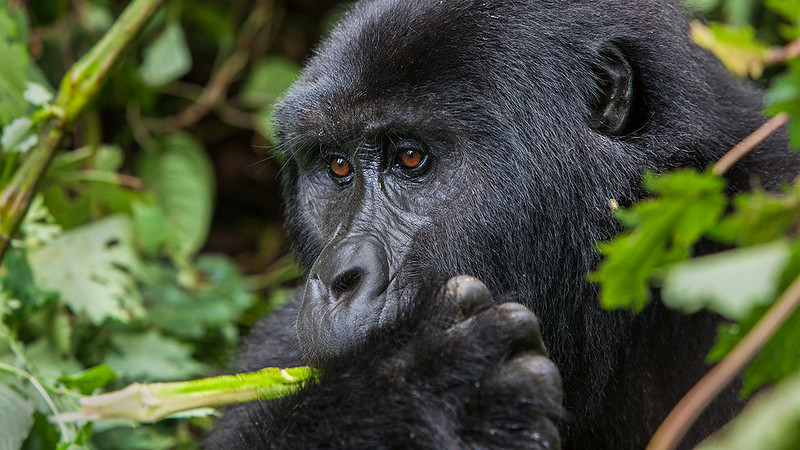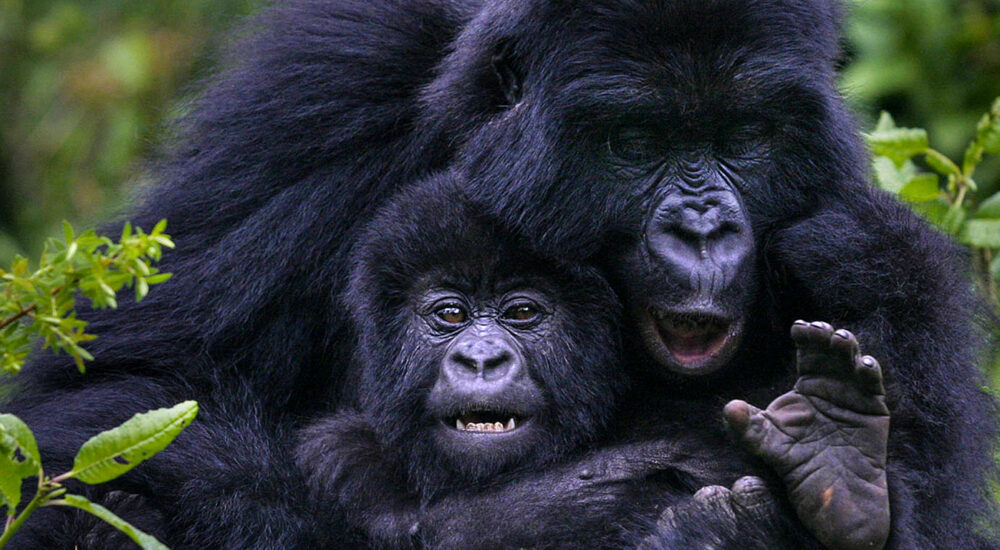Gorilla tracking permits for Nkuringo sector – Bwindi impenetrable National Park. You are currently sleeping…
Are Gorillas Primates?
Are Gorillas Primates? – Yes, gorillas are primates. To understand this more deeply, it’s important to explore what being a primate entails and how gorillas fit into this classification.
What Are Primates?
Primates are an order of mammals that includes a wide range of species, such as humans, monkeys, apes, lemurs, and tarsiers. The order Primates is characterized by a set of distinct traits, such as:
- Forward-facing eyes (which allow for depth perception),
- Opposable thumbs (helpful for grasping objects),
- Large brains relative to body size,
- Highly developed social behaviors,
- Flexible limb movement.
Primates are divided into two major suborders:
- Strepsirrhini – this group includes lemurs, lorises, and galagos (also called bush babies), which tend to be more primitive in terms of behavior and physical traits.
- Haplorhini – this group includes monkeys, apes, and humans. These species tend to be more advanced in terms of their cognitive abilities and adaptations for living in complex social environments.
Where Do Gorillas Fit in?
Gorillas are part of the Haplorhini suborder, which includes monkeys, apes, and humans. More specifically, gorillas belong to the family Hominidae, which is the family of great apes. This family also includes orangutans, chimpanzees, bonobos, and humans.
Within the Hominidae family, gorillas are further classified into two species:
- Western gorillas (Gorilla gorilla)
- Eastern gorillas (Gorilla beringei)
Traits that Define Gorillas as Primates:
-
Large Brains:
- Gorillas have relatively large brains for their body size, which is a characteristic of primates, particularly those in the great ape family. Their advanced cognitive abilities allow them to solve problems, use tools, and communicate through gestures and vocalizations.
-
Social Structures:
- Like many other primates, gorillas live in social groups. They typically form tight-knit family groups led by a dominant male called a silverback. This social structure is common among primates, where family bonds and social hierarchies play an important role in survival and reproduction.
-
Opposable Thumbs:
- Gorillas, like other primates, have opposable thumbs, which allows them to grasp objects with precision. This is a key trait that sets primates apart from many other mammals.
-
Highly Developed Vision:
- Gorillas, like other primates, have binocular vision. Their eyes face forward, providing them with depth perception, which is helpful in navigating their environment, especially when climbing trees or moving through dense vegetation.
-
Physical Flexibility:
- Gorillas have a high degree of flexibility in their arms, allowing them to engage in a variety of movements such as climbing, knuckle-walking, and sometimes standing upright. Their long arms and dexterous hands are typical of primates, especially apes.
-
Communication:
- Gorillas use a variety of vocalizations, gestures, and facial expressions to communicate. They have a complex system of communication, a trait shared by many primates.
-
Tool Use:
- Gorillas have been observed using tools in the wild, such as using sticks to test the depth of water or creating tools for foraging. While not as advanced in tool use as some other great apes like chimpanzees, their ability to use tools is still an important aspect of their intelligence.
Why Are Gorillas Not Monkeys?
Although gorillas are primates, they are not classified as monkeys. The distinction between monkeys and apes (including gorillas) is important within the broader primate classification:
-
Lack of a Tail:
- One of the key differences between monkeys and apes is that apes (including gorillas) do not have tails, while most monkeys do. This is a major anatomical difference that helps separate the two groups.
-
Larger Brain and Higher Intelligence:
- Gorillas, as well as other great apes, tend to have larger brains relative to their body size compared to monkeys. This allows them to perform more complex behaviors and problem-solving tasks.
-
Size and Strength:
- Gorillas are much larger and more powerful than most monkeys. Adult male gorillas (known as silverbacks) can weigh up to 400 pounds or more, which is far larger than most monkey species. Their physical strength is also much greater, with gorillas being able to lift heavy objects and engage in feats of strength that monkeys cannot.
-
Social Structure:
- While monkeys have a range of social structures, gorillas have more stable and intricate social systems, with each group having a dominant leader (the silverback) who maintains order and protects the group. The way gorillas live in family groups is more similar to human social structures than to the more loosely organized social groups of many monkeys.
Conclusion:
In summary, gorillas are indeed primates, and they share many common characteristics with other primates, such as large brains, forward-facing eyes, and complex social behaviors. However, they are great apes, which places them in a separate category from monkeys, with significant differences in anatomy, behavior, and intelligence. While gorillas and monkeys both belong to the larger primate family, gorillas are more closely related to humans and other great apes than to monkeys.
For the best gorilla tracking in Uganda, Rwanda and Congo, Don’t hesitate to contact monumental expeditions and safaris based on itineraries like; 3 day Bwindi, 5 day gorillas and chimps, 3 day gorilla Rwanda, 10 day gorillas and wildlife to mention.


